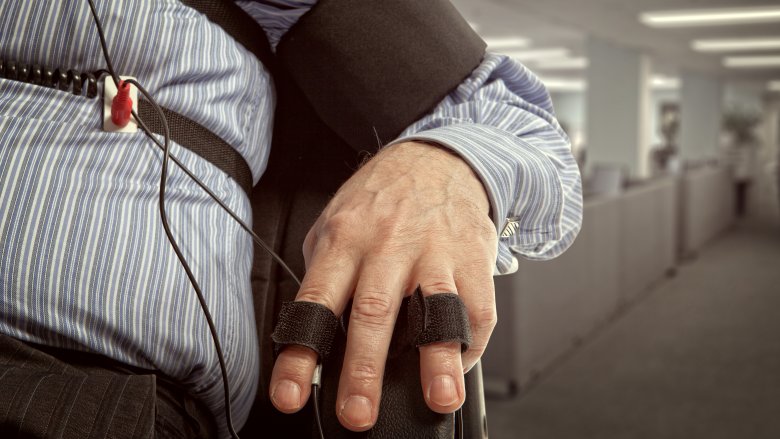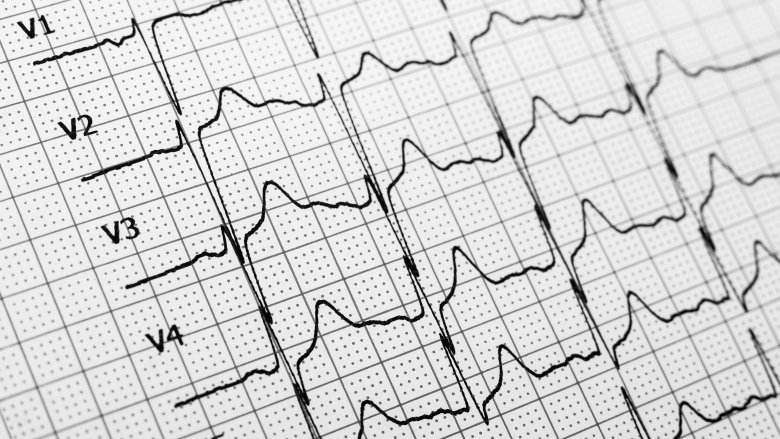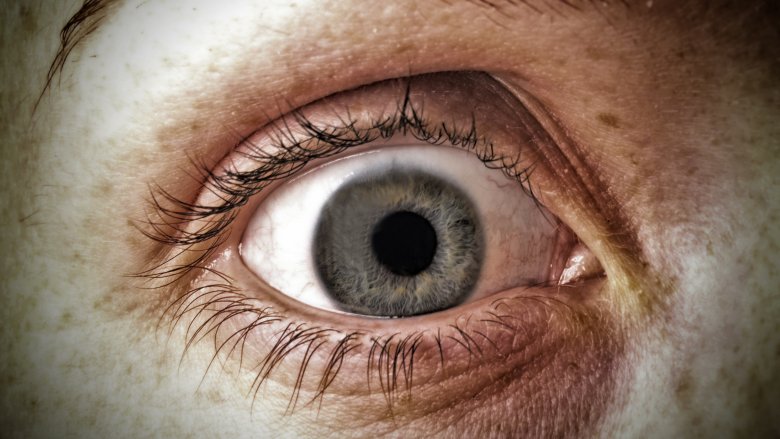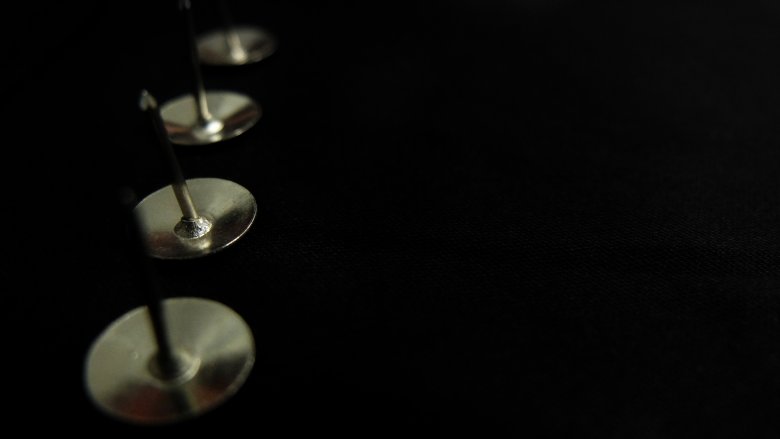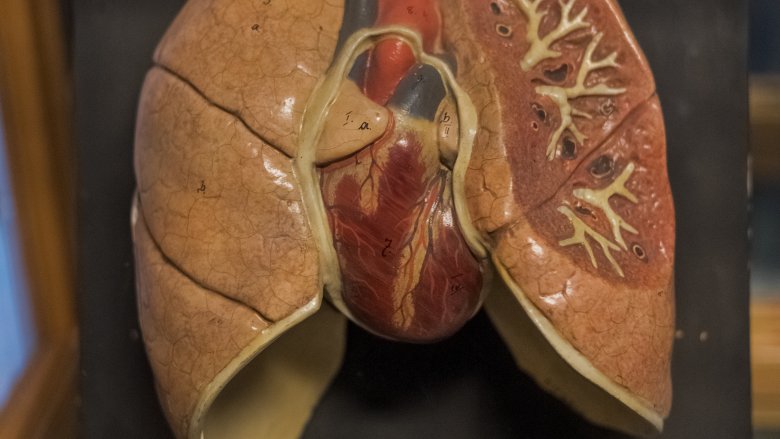How To Beat A Lie Detector Test
With the possible exception of a badly timed drug test, there's no test more terrifying than a polygraph examination. A failed polygraph examination can and will ruin a person's life. The thing is, there's no reason for anyone to fail a lie detector test. The science behind a polygraph is flawed at best, and the reliability of the results are little better than that of a coin flip. At the end of the day, a polygraph is just like a final exam. With a little prior preparation, anyone can pass.
Become aroused
A modern polygraph works by measuring heart rate, blood pressure, and perspiration. These readings are recorded, and a technician will correlate changes in vital signs against the questions an examiner asks. Theoretically, if you can manipulate your heart rate, blood pressure, and perspiration, you can fake a lie detector test. Manipulating vital signs at the drop of a hat is not an easy task but is totally doable.
There are two ways to go about that. One: spend years under the tutelage of Tibetan monks or Ra's al Ghul and master control of the physical world. Two: for those who don't have the time or the generations of inherited wealth necessary to train in that manner, there's a really quick shortcut that most people are experienced at. Think really hard about the man, woman, or cartoon pony (no judgment here) you're attracted to when answering truthful questions during an examination. The arousal created by such thoughts is similar to the increase in heart rate and perspiration that accompanies lying, and by employing this method, you obscure lies. Thinking really ... uh ... hard about truthful answers should be pretty easy.
Daydreaming
If Russian dashboard cam videos have taught us anything, it's that people have a natural talent for not paying attention at the worst possible moment. This "ignoring things" skill can be harnessed to pass a polygraph examination.
Russell Tice, who was a NSA whistleblower before it was cool, employed a rather unconventional tactic during his annual polygraph exam while he was at the agency. During Tice's examinations, he would daydream about Disney movie type stuff like cute puppies and warm summer days when he lied. By daydreaming, all of the vital signs that a polygraph measured would remain unchanged.
The simplicity of Tice's approach was genius. The man compartmentalized his brain and would ignore questions he knew he would have to lie to while literally thinking about puppies and kittens. This has to be the most adorable way ever of defeating the authorities.
Scare yourself
A polygraph is terrifying for a variety of reasons. Often, it's in a claustrophobia-inducing room. The tester looks like the type of person to have a soundproof basement with floors that slope toward an unusually large drain while a meat hooks dangle from the ceiling. But that terror can be harnessed to fake out the test results.
When being asked control questions during an examination, think of the most terrifying thing imaginable. The thoughts will increase all of the physiological indicators that are measured by a polygraph. After thinking about terrifying thoughts during the control questions, the remaining results would now look truthful. This is without a doubt the easiest way to beat a lie detector test. Just think about what would happen if you should fail the exam—a lifetime in a windowless box combined with awkward shower situations—at the right moment during the test, and you should be fine.
Just a little pain
While the effectiveness of polygraphs in determining if a subject is lying is debatable at best, polygraphs are really good at measuring if someone is feeling stress. For normal people, lying is stressful, whereas telling the truth is relatively calming. Measuring stress is the foundation of the "science" behind a lie detector, so that stress must be attacked to beat the test.
One trick for beating a lie detector comes straight out of Hollywood and works. By inflicting small amounts of pain with something like a thumb tack, you show stress, indicating that you're lying. The trick here is for you to stab yourself when you're telling the truth. This will camouflage the lies.
For the masochists in the crowd, stabbing themselves repeatedly should be second nature by this point. For everyone else, perhaps it would be better to channel your inner George Costanza before you try stabbing yourself a few dozen times.
Learn to stop sweating
One physiological sign measured by a polygraph that receives little attention is perspiration. Increased perspiration combined with an increased heart rate usually indicates you're probably lying about something. The fact that you're in a windowless room with a bunch of unfamiliar doohickeys stuck to your body is apparently not taken into consideration when measuring perspiration. But if you don't sweat, there would be no perspiration to measure, and passing a lie detector becomes a relatively straightforward process.
There are a couple of different ways to go about eliminating perspiration. Covering your entire body with antiperspirant is an option but is a little impractical and conspicuous. A more entertaining option is to partake in a night of drinking worthy of a Hangover sequel. Theoretically, the dehydration would bring you to the point that you could no longer sweat—but in all likelihood that level of drinking would probably end with a trip to an ER.
Luckily, there's a medical condition known as hyperhidrosis where people sweat a lot. Modern pharmacology has stepped up to the plate to provide the sufferers of hyperhidrosis with a variety of heavy duty options in pill form. While the drugs for hyperhidrosis are prescription-only, most people facing a polygraph exam probably wouldn't let a little formality like that get in the way of keeping them out of jail.
Controlled Breathing
In life as well as during a polygraph, breathing is kind of a big deal. Breathing keeps you alive, and if you breathe properly during a polygraph, it can also keep you out of jail. GO LUNGS GO!
Anyway, breathing affects all of the physiological indicators that a polygraph is trying to measure. When you lie, there's a tendency to hold your breath or take a deep breath depending on the level of lie. Holding your breath will momentarily deprive the heart of oxygen, affecting blood pressure and heart rate. On the other hand, deep breaths flood the body with oxygen, relaxing the heart ever so slightly and giving the polygraph something else to work with.
The trick here is consistency. Breathe at the same rate for the entirety of the exam, and the examiner will not be able to establish if a subject is lying or telling the truth. While the controlled breathing approach is effective, there's the unfortunate side effect that autoerotic asphyxiation might become appealing. You really got to take the good with the bad on this one.
Stay calm
For a variety of reasons, it's difficult to remain calm during a polygraph exam. Yet if you can, there will be absolutely nothing for the machine to record, and you can pass with flying colors. There are various techniques, but all boil down to not thinking about the situation or the consequences. The major obstacle to this approach is you have to be a complete sociopath to pull it off.
CIA agent and traitor Aldrich Ames used this method several times to deflect attention while he was selling information to the Soviets during the '80s. Ames wrote at length after his arrest about how ineffective polygraphs are. Serial killers Gary Ridgway and Charles "The Angel of Death" Cullen also passed their polygraphs with flying colors, simply by remaining calm.
Ironically, polygraphs appear to be ineffective at detecting the very type of person they're supposed to catch—sociopaths. It's almost like everything we know about polygraphs and their effectiveness is wrong and that the use of them has condemned hundreds of people for imagined crimes ... oh, wait.
